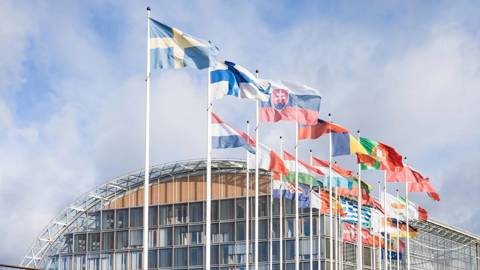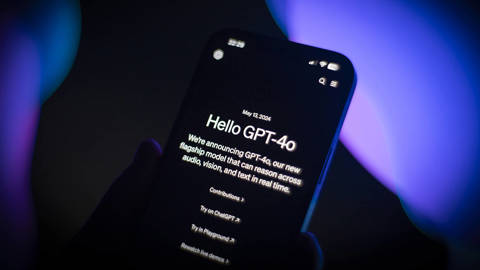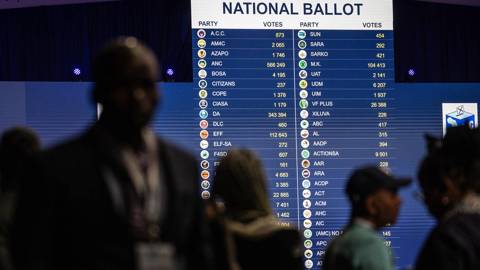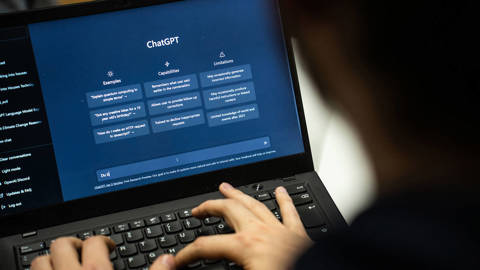School voucher schemes remain controversial in many countries. But, as Sweden has shown, they can help give countries a competitive edge by broadening the range of schools and pedagogical approaches while maintaining equal access for all.
STOCKHOLM – The Nordic countries’ economies are performing well, and a part of the reason is that they are gradually reforming their “social model,” adapting it to new realities in ways that respond to people’s demands. But there is nothing uniquely “Nordic” about this change. On the contrary, it is one that others can emulate.
Obviously, such a policy requires significant investment in research and development. Sweden, for example, invests more than any other European country in this area – well above the EU target of 3% of GDP. Many countries invest less, and even Sweden’s 4% of GDP might not be enough, given higher spending on R&D in China, India, and the United States.
Moreover, large investments in R&D may be of limited use if knowledge can’t be transformed into successful businesses. That requires adopting policies that cover everything from kindergarten training to collaboration between universities and companies, as well as an overall business climate in which success is rewarded and failure is not treated as a human catastrophe. America’s success is to a great extent based on this kind of thinking.
Unfortunately, most European educational systems are based on outdated practices and theories. Although educational possibilities and structures have gradually been diversified, the major shortcoming of most European educational systems remains: students have too few choices, and teachers, if they want to remain in their profession, must adhere to a severely compartmentalized pedagogy.
As with corporate monopolies, the consumers (students) are often seen as a homogeneous mass, where all students can be educated according to the same pedagogical approach. But schools must be able to meet the needs and abilities of individual children in a way that makes learning a stimulating adventure.
Other countries might find Sweden’s system worth studying. Its schools are financed by local communities and work within the framework of a national curriculum designed by the parliament and government. But, while everyone must follow these rules, individual schools are run in a competitive manner. Anyone – parents, teachers, or even companies – can apply for a license to operate a school. The National School Board is, in principle, instructed to approve an application if the proposed school is likely to fulfill the national goals and has a solid financial base.
Moreover, private schools are not seen as mere supplements to public schools, but as fully-fledged alternatives, so they need not offer something different. A community where a private school offers its services must support it with the same amount of money, or vouchers, per student that it provides to public schools. The amount of financing per student is the same, and schools that receive vouchers cannot charge additional fees.
After this system was adopted in the 1990’s, many non-public schools were established. The pioneers were often parents’ or teachers’ cooperatives, usually with a special pedagogical philosophy. Companies operating chains of schools later came to play an important role as well.
As a result, the variety of schools has increased throughout Sweden. The voucher system means that all students, irrespective of family income, can attend the school of their choice. Even in rural areas, there is now a wide choice of schools, and it seems that competition has improved the overall quality of Swedish schools, as non-public schools’ very existence has created a demand for reform of public schools. If there is any difference, it seems that non-public schools often are better than public schools in dealing with children with learning problems.
There are, of course many alternatives to what Sweden has done to revitalize education. But three features of Sweden’s reform seem particularly important: it was based on a combination of public and market systems; it was general in form, without demanding that non-public schools be special in order to be licensed; and it covered all students.
Sweden’s voucher educational system is probably the most ambitions of its kind in the world. This is all the more remarkable insofar as the principle of competition on which it relies has taken root in a country where competition within the area of public services has not generally been accepted.









STOCKHOLM – The Nordic countries’ economies are performing well, and a part of the reason is that they are gradually reforming their “social model,” adapting it to new realities in ways that respond to people’s demands. But there is nothing uniquely “Nordic” about this change. On the contrary, it is one that others can emulate.
Obviously, such a policy requires significant investment in research and development. Sweden, for example, invests more than any other European country in this area – well above the EU target of 3% of GDP. Many countries invest less, and even Sweden’s 4% of GDP might not be enough, given higher spending on R&D in China, India, and the United States.
Moreover, large investments in R&D may be of limited use if knowledge can’t be transformed into successful businesses. That requires adopting policies that cover everything from kindergarten training to collaboration between universities and companies, as well as an overall business climate in which success is rewarded and failure is not treated as a human catastrophe. America’s success is to a great extent based on this kind of thinking.
Unfortunately, most European educational systems are based on outdated practices and theories. Although educational possibilities and structures have gradually been diversified, the major shortcoming of most European educational systems remains: students have too few choices, and teachers, if they want to remain in their profession, must adhere to a severely compartmentalized pedagogy.
As with corporate monopolies, the consumers (students) are often seen as a homogeneous mass, where all students can be educated according to the same pedagogical approach. But schools must be able to meet the needs and abilities of individual children in a way that makes learning a stimulating adventure.
Other countries might find Sweden’s system worth studying. Its schools are financed by local communities and work within the framework of a national curriculum designed by the parliament and government. But, while everyone must follow these rules, individual schools are run in a competitive manner. Anyone – parents, teachers, or even companies – can apply for a license to operate a school. The National School Board is, in principle, instructed to approve an application if the proposed school is likely to fulfill the national goals and has a solid financial base.
SPRING SALE: Save 40% on all new Digital or Digital Plus subscriptions
Subscribe now to gain greater access to Project Syndicate – including every commentary and our entire On Point suite of subscriber-exclusive content – starting at just $49.99.
Subscribe Now
Moreover, private schools are not seen as mere supplements to public schools, but as fully-fledged alternatives, so they need not offer something different. A community where a private school offers its services must support it with the same amount of money, or vouchers, per student that it provides to public schools. The amount of financing per student is the same, and schools that receive vouchers cannot charge additional fees.
After this system was adopted in the 1990’s, many non-public schools were established. The pioneers were often parents’ or teachers’ cooperatives, usually with a special pedagogical philosophy. Companies operating chains of schools later came to play an important role as well.
As a result, the variety of schools has increased throughout Sweden. The voucher system means that all students, irrespective of family income, can attend the school of their choice. Even in rural areas, there is now a wide choice of schools, and it seems that competition has improved the overall quality of Swedish schools, as non-public schools’ very existence has created a demand for reform of public schools. If there is any difference, it seems that non-public schools often are better than public schools in dealing with children with learning problems.
There are, of course many alternatives to what Sweden has done to revitalize education. But three features of Sweden’s reform seem particularly important: it was based on a combination of public and market systems; it was general in form, without demanding that non-public schools be special in order to be licensed; and it covered all students.
Sweden’s voucher educational system is probably the most ambitions of its kind in the world. This is all the more remarkable insofar as the principle of competition on which it relies has taken root in a country where competition within the area of public services has not generally been accepted.